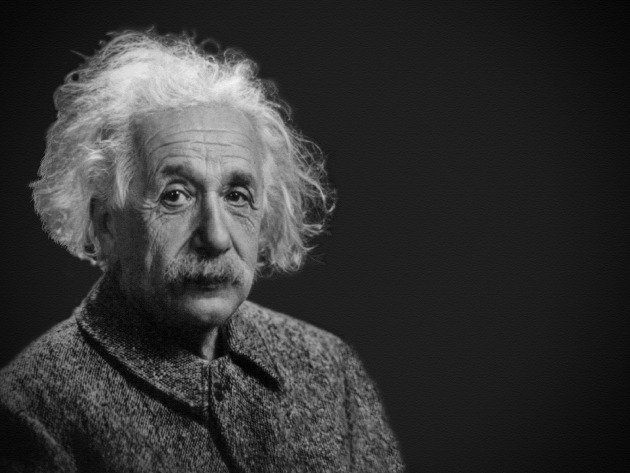Master Your Camera Settings
Understanding your camera’s settings is crucial for capturing high-quality photos. As a beginner, mastering the fundamentals of aperture, shutter speed, and ISO will significantly enhance your photography skills. These three elements, often referred to as the exposure triangle, work in tandem to control the exposure and overall look of your images.

Aperture, measured in f-stops, determines the amount of light that enters the camera. A lower f-stop number (e.g., f/1.8) means a larger aperture, allowing more light to hit the sensor and creating a shallow depth of field. This is ideal for portraits where you want a blurred background. Conversely, a higher f-stop (e.g., f/16) results in a smaller aperture, reducing the light intake and giving a greater depth of field, useful for landscape photography.
Shutter speed controls the duration for which the camera’s sensor is exposed to light. Faster shutter speeds (e.g., 1/1000s) freeze motion, making them perfect for action shots, while slower shutter speeds (e.g., 1/30s) can create motion blur, adding a sense of movement to your photos. Remember, slower shutter speeds may require a tripod to avoid camera shake.
ISO measures the sensitivity of your camera’s sensor to light. A lower ISO (e.g., 100) is ideal for bright conditions and results in minimal noise, whereas a higher ISO (e.g., 3200) can be useful in low-light situations but may introduce graininess to your images. Striking the right balance is key to achieving high-quality photos.
Experimenting with different settings is essential for understanding how they affect your images. Start by using your camera in manual mode, which gives you full control over aperture, shutter speed, and ISO. Practice adjusting these settings in various lighting conditions and scenes to see the resulting changes in your photos. Over time, you will develop an intuitive sense of which settings to use for different scenarios, making you more confident and proficient in your photography endeavors.
Focus on Composition
Understanding and mastering composition is crucial for any beginner photographer. One of the foundational principles is the rule of thirds. This technique involves dividing your frame into a 3×3 grid and positioning the most important elements of your scene along these lines or at their intersections. By doing so, you create more balanced and engaging photographs, which naturally draw the viewer’s eye to key areas of interest.

Another significant aspect of composition is the use of leading lines. These are lines within the photograph that guide the viewer’s gaze toward the main subject. Leading lines can be anything from roads, rivers, fences, or even shadows. They help to create a sense of depth and dimension, making your photos more dynamic and visually appealing.
Framing is another effective compositional technique that can enhance your images. This involves using elements within the scene to create a ‘frame’ around your subject. Natural frames can include doorways, windows, or tree branches. This method not only draws attention to the subject but also adds context and layers to your image, making it more compelling.
Experimenting with different angles and perspectives is also vital in creating interesting compositions. Instead of always shooting at eye level, try capturing your subject from a high or low angle. Changing your viewpoint can reveal unique patterns, shapes, and textures that might not be apparent from a standard perspective. This variety can make your photos stand out and keep them visually stimulating.
Incorporating these compositional techniques into your photography practice can significantly improve the quality of your images. By paying attention to the rule of thirds, leading lines, and framing, and by experimenting with angles and perspectives, you can create more balanced, dynamic, and captivating photographs. These skills are essential for any budding photographer looking to enhance their visual storytelling abilities.
Learn About Lighting
Lighting is a fundamental element in photography that can make or break an image. Understanding the nuances of natural light versus artificial light is crucial for capturing compelling photos. Natural light, such as sunlight, can create a warm and inviting ambiance, while artificial light allows for greater control over the intensity and direction of illumination. Each type of light has its own set of advantages and challenges, making it essential to understand how to leverage both effectively.

One of the most opportune times to shoot photos is during the “golden hour,” which occurs shortly after sunrise and before sunset. During this period, the sun is low in the sky, casting a soft, diffused light that can enhance the colors and textures in your photos. The golden hour is ideal for creating a magical and ethereal quality in your images, making it a favorite among photographers.
Shadows also play a crucial role in adding depth and dimension to your photographs. By strategically using shadows, you can create a sense of contrast and drama, leading the viewer’s eye to the focal point of the image. Experimenting with different angles and light sources can help you understand how shadows can be used to your advantage.
Making the most of available light is a skill that can significantly improve your photography. When shooting outdoors, always be mindful of the sun’s position and how it affects your subject. In indoor settings, consider how windows and artificial light sources can be used to illuminate your subject adequately. Reflectors and diffusers are invaluable tools that can help manipulate light to achieve the desired effect. Reflectors bounce light onto your subject, reducing harsh shadows, while diffusers soften the light, creating a more flattering and even distribution.
By mastering the intricacies of lighting, you can elevate the quality of your photos and develop a keen eye for capturing the perfect shot. Whether you are working with natural or artificial light, understanding how to manipulate and optimize lighting conditions will set you on the path to becoming a more skilled and versatile photographer.
Practice and Experiment
Embarking on a journey to master photography requires consistent practice and a willingness to experiment with different techniques and styles. As a beginner, it is essential to dedicate time regularly to your craft. The more you practice, the more familiar you become with your camera’s settings and capabilities, allowing you to capture high-quality images with greater ease.
Experimentation is a crucial aspect of the learning process. Do not hesitate to try out various techniques, whether it’s shooting in different lighting conditions, exploring unusual angles, or using diverse focal lengths. This exploratory approach will enable you to discover your unique style and preferences, contributing to your growth as a photographer.

Reviewing your work critically is another significant step in your progression. Analyze your photographs to identify areas of improvement and understand what worked well. Learning from your mistakes is invaluable; it helps you refine your skills and avoid repeating the same errors in future shoots. To gain further insights, seek feedback from more experienced photographers. Constructive criticism can offer new perspectives and highlight aspects you might have overlooked.
Engaging with photography communities can provide a supportive environment where you can share your work and receive valuable input. Many online platforms and local groups offer forums, workshops, and meetups, fostering a culture of continuous learning. Participation in photography challenges or contests can also serve as a source of motivation, pushing you to step outside your comfort zone and try new things.
Incorporating these practices into your routine will undoubtedly enhance your skills and confidence as a photographer. Remember, every great photographer started as a beginner, and the key to success lies in persistent practice and an open mind towards experimentation.









